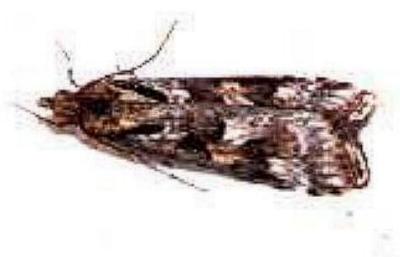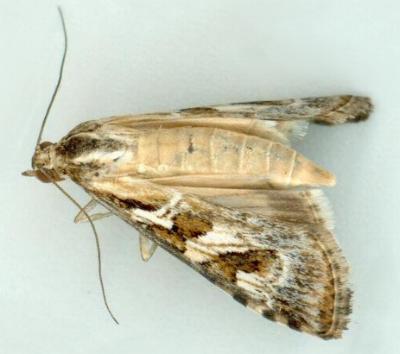The young Caterpillars of this species are gregarious,
living in a nest of leaves of the foodplant joined with silk.
Later, they make holes in the ground lined with silk
in which to live, emerging to feed at night.
In captivity, they accepted leaves from plants of many
families, including :
ASTERACEAE,
FABACEAE, and
POLYGONACEAE.
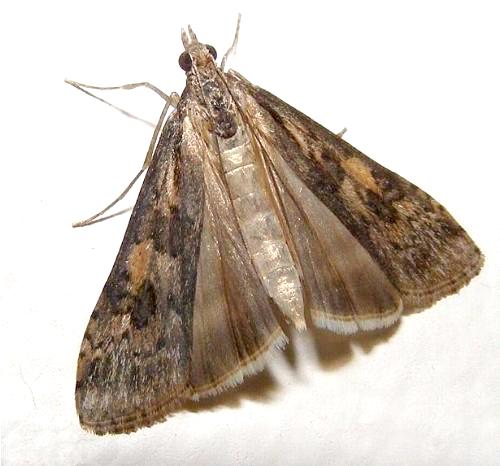
(Photo: courtesy of
Jenny Holmes, Wimmera, Victoria)
The adult moths have brown forewings,
each with a specific pattern of light and dark splotches.
The hindwings are pale brown, each with a variable dark band along the margin.
The moths have a wingspan of about 2 cms.
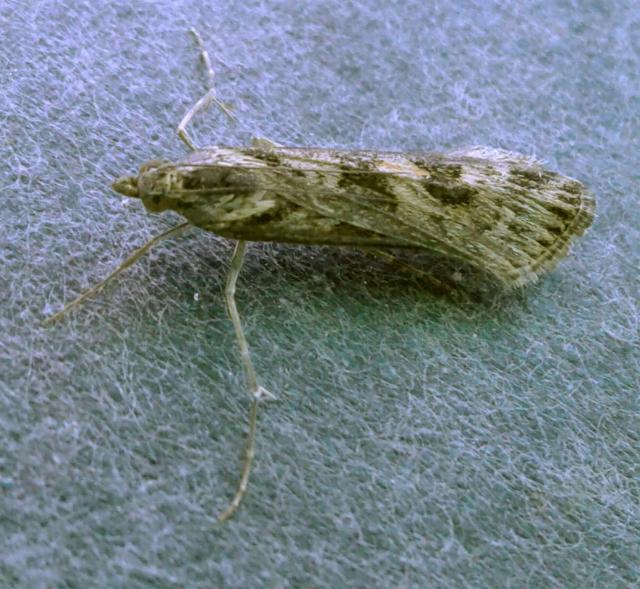
(Photo: courtesy of Marion Helwig, near Geraldton, Western Australia)
The species has been found on
Christmas Island,
and over most of Australia including:
Western Australia,
Northern Territory,
Queensland,
New South Wales,
Australian Capital Territory,
Victoria,
Tasmania, and
South Australia.
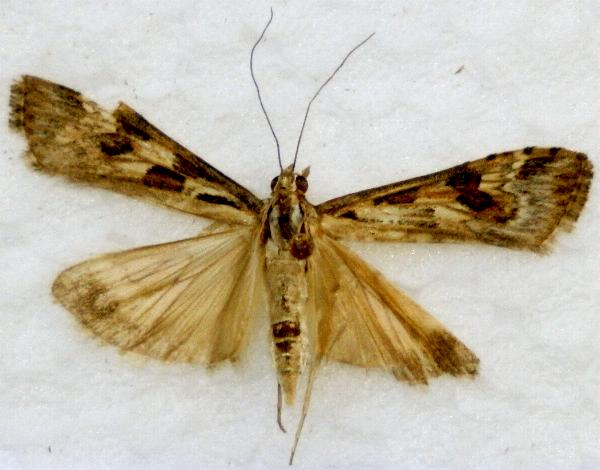
(Photo: copyright of
Uwe Path, Alice Springs, Northern Territory)
Further reading :
Ian F.B. Common,
Moths of Australia,
Melbourne University Press, 1990, fig. 34.4, p. 357.
Francis Walker,
Characters of undescribed Lepidoptera Heterocera,
E.W. Janson, London, 1869, pp. 73-74, No. 23.
(updated 30 January 2013, 11 August 2019, 3 July 2020)

